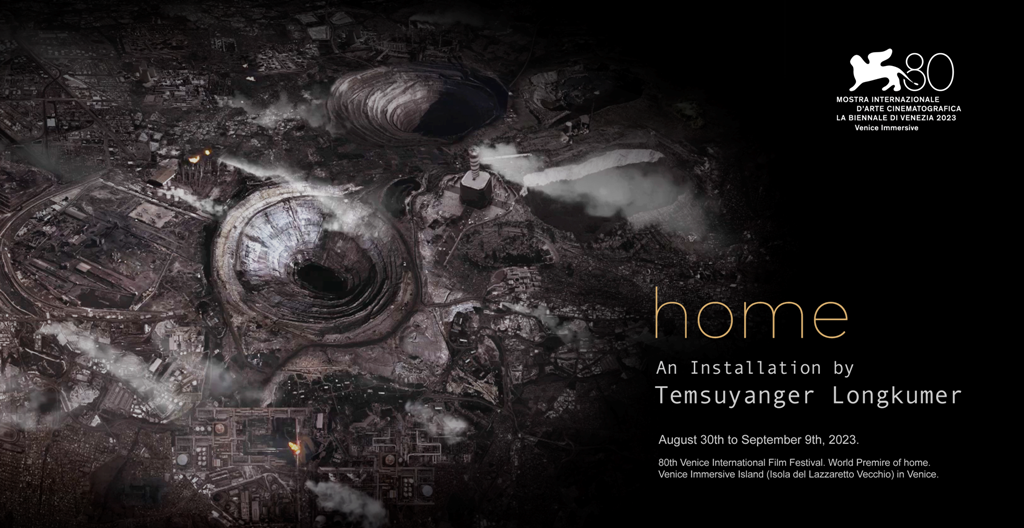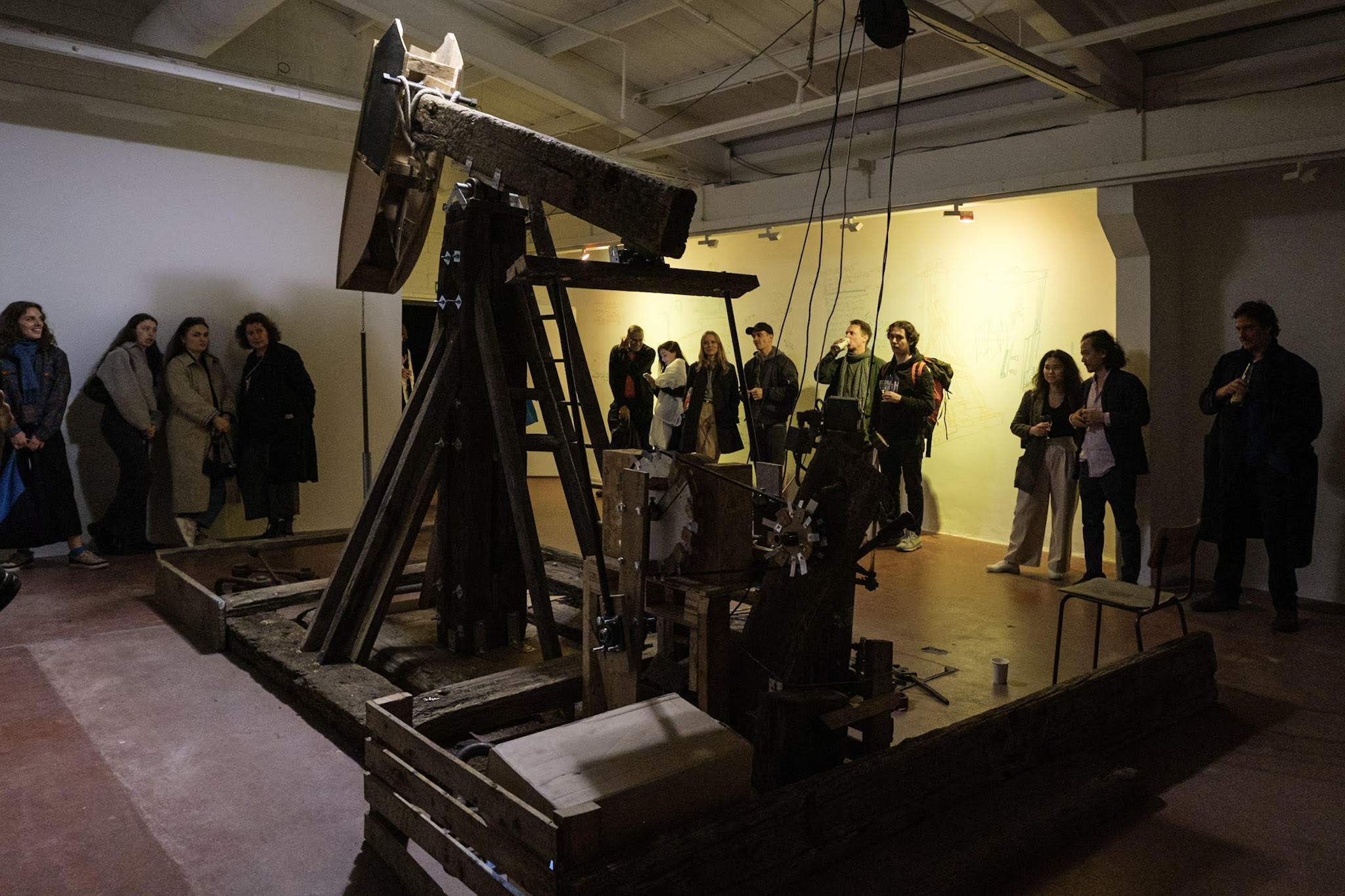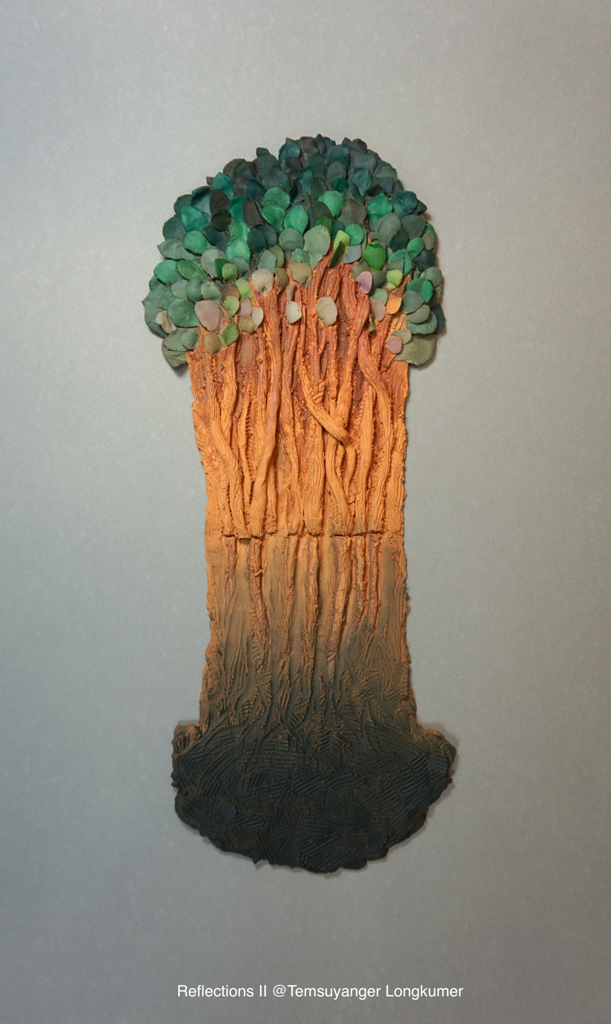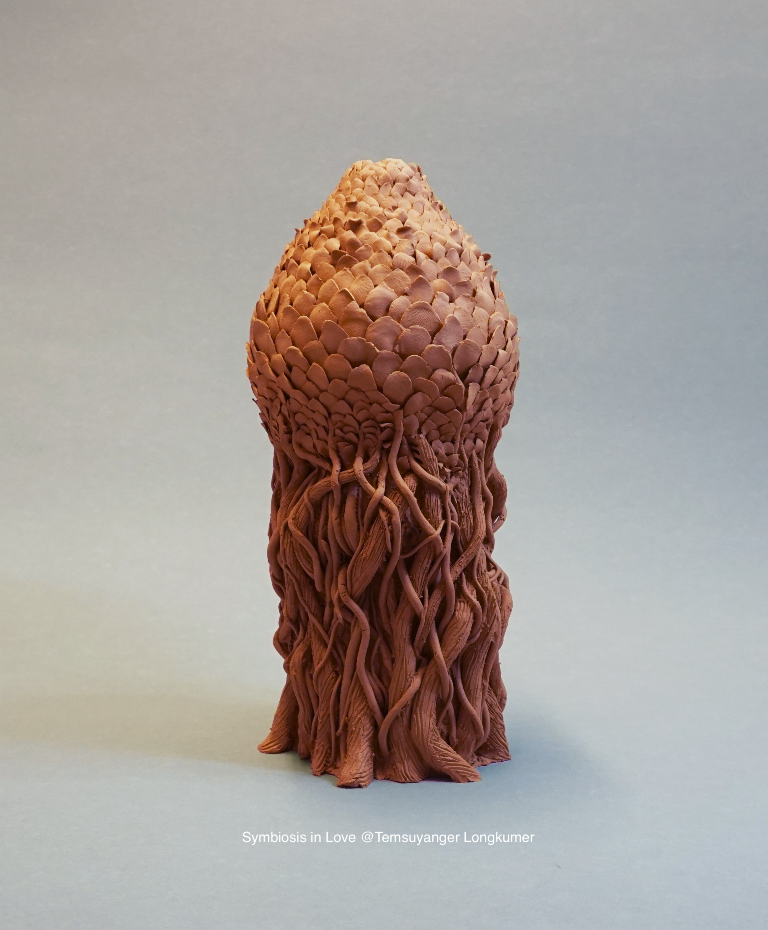
The poster
for Temsüyanger Longkumer’s immersive installation film ‘home' was
featured at the 80th International Film Festival in 2023.
Synopsis:‘home’ portrays humanity's
intricate and often troubled bond with our planet, symbolised by a beehive.
Nature and society flourish as complex organisms. Within it, unintentional yet
flawed choices imperil our future, posing an existential threat to all
inhabitants. Loss of habitat and forced extinctions become increasingly common.
Ingenious adaptations by humanity shape our environment to suit cultural
beliefs, crafting elaborate systems to fulfil ever-growing perceived desires for
comfort and leisure. We march on and press forward, forging new paths and
conquering virgin frontiers, convinced that this is the right way, the only
way.
- DIMAPUR — For
Temsüyanger Longkumer, an artist originally from Nagaland, art is a dialogue—a
way to connect seemingly disparate worlds while staying rooted in a strong
cultural identity. His practice involves themes of migration, identity, and
interconnectedness, drawing inspiration from his personal experiences and the
rich cultural narratives that shaped his early years in Nagaland.
- As
indigenous and under-represented voices increasingly find their place in the
global art scene, Longkumer is one of the artists leading this shift. Fresh
from his showcase at the London Art Fair 2025, he reflects on how this evolving
landscape is embracing artists from marginalised communities.
“There’s a growing appreciation for diverse perspectives and
narratives, which reflects a broader shift toward acknowledging cultural
richness and complexity,” he told Eastern Mirror during an interview conducted
via email.
- “Platforms
like the London Art Fair and other international exhibitions provide
opportunities for artists like myself to engage with global audiences, sparking
conversations that were not always possible before,” he noted.
- Longkumer’s
journey began in Nagaland, where the exposure to rich oral traditions, the
community-centred way of life, and the challenges of living in a changing world
were pivotal in shaping his artistic path.
- “Growing
up in a place rich with natural beauty, diverse cultures, and traditions, I was
always surrounded by stories, rituals, and the art of daily life,” he recalled.
“The visual languages embedded in our culture—whether through textiles,
ceremonial masks, or carvings—were my first sources of inspiration.”
- Whether he
is creating immersive installations and paintings or exploring sculptural
forms, Longkumer said he draws on themes of community, resilience, and the
relationship between people and their environment—concepts that are deeply
rooted in the Naga cultural heritage.
- Further,
the communal ethos of Naga society, how “the idea of ‘we’ often took precedence
over ‘I,’ and this interconnectedness finds its way into my art, where I
explore the bonds that connect people, places, and time,” he explained.
- The
journey, however, has not been without challenges. Opportunities to pursue art
professionally were scarce in Nagaland, but determined to follow his passion,
Longkumer pursued art education in India before earning a scholarship to study
at the Royal College of Art in London.
- “This
incredible opportunity opened doors to a broader world of artistic exploration
and practice,” he noted.
- Living in
fast-paced London in contrast with Nagaland’s slower, community-centred way of
life has created a “unique tension” as he merges both worlds in his work, he
explained.
- Moreover,
being away from Nagaland, he said, has provided the space to reflect more
deeply on his roots and cultural identity.
- Bridging
the personal and the universal
- It is
within this context that Longkumer, the artist, bridges the personal and the
universal, engaging with themes of migration, community, identity, and the
environment.
- Examples of
his work include home, an immersive film installation featured at the
80th Venice International Film Festival in 2023. The project uses the metaphor
of a beehive to explore humanity’s intricate and often troubled bond with the
planet. It offers a provocative commentary on ecological decline and how
unintentional yet flawed human choices imperil our future.

Temsüyanger
Longkumer’s solo exhibition at Greatorex Gallery in London, 2024, titled “Beast
of Burden; or, The Modern Frankensteins” (Kinetic Sculpture). This
exhibition explores one of our contemporary counterparts to Dr. Frankenstein’s
creation—the oil pump machines, affectionately known as “Nodding Donkeys.” The
exhibition showcases this modest yet unfortunate machine, which has become
emblematic of the environmental challenges and ecological decline confronting
our planet. Drawing upon the intricacies of unintended consequences and the
paradoxes entangled within our pursuit of “progress” and “development,” this
work serves as a poignant tribute to the symbol of human culpability—the
scapegoat of our modern era.
- Another
notable work, Beast of Burden; or, The Modern Frankensteins, a kinetic
sculpture exhibited at Greatorex Gallery in London in 2024, critiques the
environmental consequences of modern industry. Using oil pump machines as a
symbol, the piece enquires into humanity’s paradoxical pursuit of progress and
innovation.
- Through
works like these, he invites audiences into a cross-cultural dialogue and
offers insights that are hard to articulate through traditional discourse.
- “Art
bridges gaps by fostering empathy, enabling people from different backgrounds
to find common ground,” he maintained.
Longkumer’s work has garnered attention from prestigious
platforms, including features in Forbes and Prestige magazine, with the former
noting his exploration of “humanity’s interaction with nature” at the London
Art Fair
- Such
recognition, he said, is “humbling and motivating” and serves as a reminder of
the responsibility to foster meaningful dialogue and contribute to the ongoing
conversation around art, culture, and society.
- “It
reassures me that my work, which is deeply rooted in my cultural heritage and
personal experiences, resonates beyond local or regional boundaries,” he added.
- Going back
to his beginnings in the global art community, the artist recalled that “coming
from a small, remote region like Nagaland, where access to art networks and
opportunities was limited, the first hurdle was simply finding the right
platforms to share my work.”
- As an
emerging artist, financial constraints were another obstacle because securing
funding for projects, exhibitions, and even materials can be difficult. While
it seemed like an “uphill battle” to make ends meet while pursuing his passion,
“persistence, a willingness to learn, and a deep passion for my craft,” and various
odd jobs, enabled him to overcome these obstacles.
- “The
guidance of mentors, the camaraderie of fellow artists, and the interest in my
work through exhibitions have all played a vital role in my journey,” he added.

Sculptures by Temsüyanger Longkumer
- The
present and future
- At present,
the London Art Fair has given him a broader platform and sparked meaningful
conversations and potential collaborations, he said, with a note of
appreciation to the London-based Oliver Projects gallery for exhibiting his
work.
- Longkumer
hopes his work will continue to prompt reflection on the complexities of human
existence and their relationship with the world. “Through my sculptures, I aim
to inspire introspection and highlight the importance of unity, empathy, and
shared responsibility,” he said.
- For the
future, Longkumer is preparing for upcoming exhibitions, including one in
Nagaland exploring themes of farming and community.
- Noting that
the momentum is shifting toward inclusivity in the art world, he expressed hope
that emerging artists, “especially those from under-represented regions like
Nagaland, would be to remain true to your voice and experiences while remaining
open to experimentation and growth.”
- While
building a career in art takes time and perseverance, he encouraged them to
“stay curious, stay committed, and remember that every experience—whether
successful or challenging—helps shape your artistic journey.”

Sculptures by Temsüyanger Longkumer



